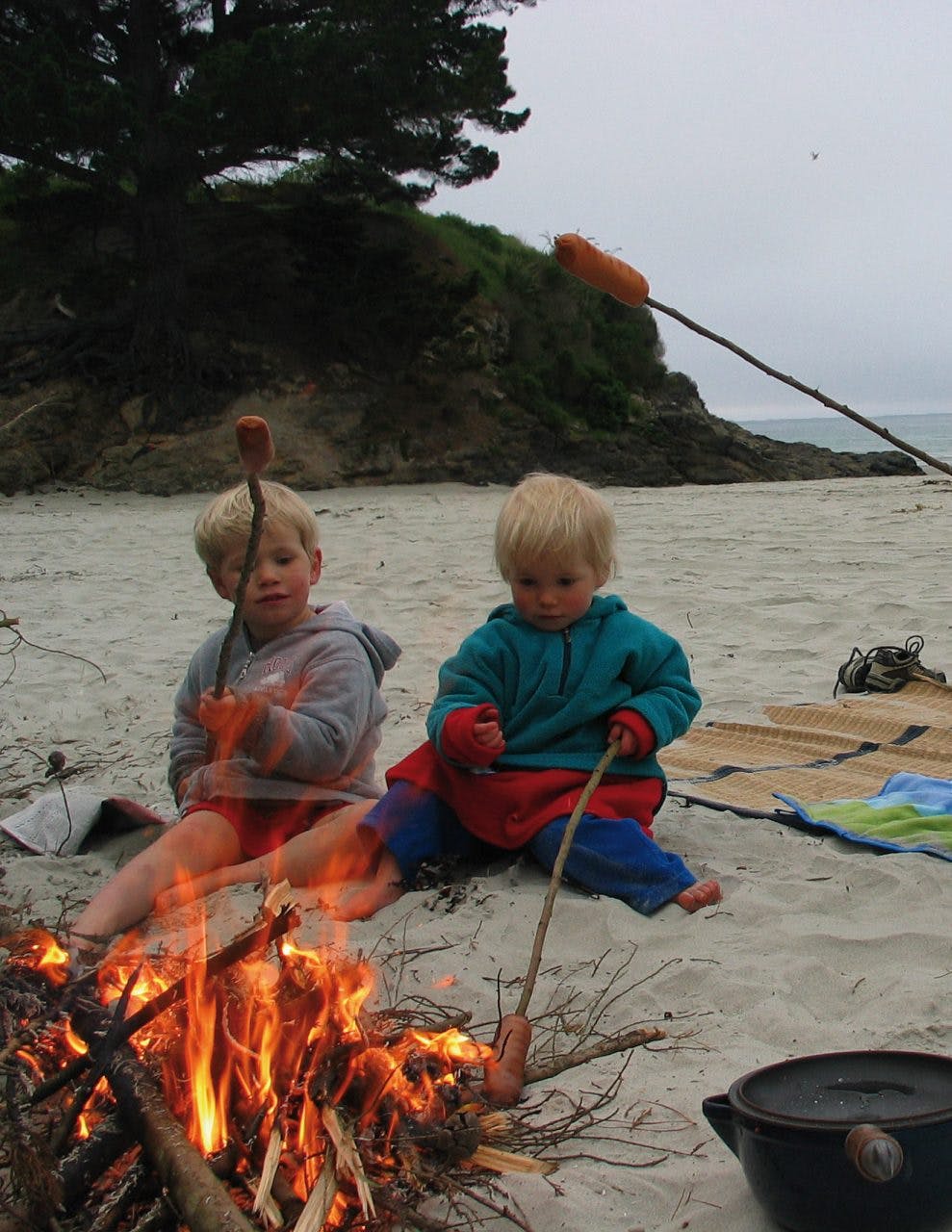Homemade twig cookers bring us closer to nature in a way that hi-tech cooking systems just can’t imitate
These days cookers are pretty amazing pieces of technology. There’s a whole host of innovations out there including heat exchangers, precision flame controls, wind shields, collapsible legs, dedicated tool kits, titanium cookware and integrated pots and mugs. Most aren’t even called cookers anymore but rather cooking systems.
I’ve been slowly retiring my 15 year old MSR Whisperlite. Not so much because it’s broken – it’s virtually indestructible. But rather, on tramps with our family, the need to prime it (being careful not to use too much fuel) and also to pump it to build pressure, makes it pretty much a lethal weapon in the hands of a 10-year-old. Something a bit simpler is called for if I’m going to persuade anyone else to make the coffee in the morning.
So now it’s my Snow Peak GigaPower stove that usually gets packed. Screwing on the gas canister, opening the valve, and putting a match to the gas is all it takes. Simple stuff for anyone.
It’s a far cry from how meals used to be cooked in the hills. Early accounts invariably emphasise how getting fed meant being skilled at making fires. Guidebooks gave detailed instructions on how best to hang your billy or build a fire. For example, the 1951 edition of Moir’s Guide to the South notes: ‘The best kindling consists of branches or twigs which have been blown down within the past few months, so that the leaves are still firmly attached to the branches. While the fire is being started some overhead protection is essential, so place long sticks in the form of an inverted V over the fireplace and cover with strips of bark, fern leaves etc.’
Somehow, cooking a meal on a fire has gone out of fashion. Of course there’s the obvious issue of huts being burnt down from some individual’s illogical behaviour that, in the interests of tidiness, leads them to empty the ashes under the hut. This irrational activity has forced DOC to install dedicated ash bins outside many huts so the blindingly obvious is made totally blindingly obvious.
But there’s more to fire’s loss of favour. DOC – asking trampers to minimise their impact – says ‘fires use up wood, destroy insects and other animal life… Fallen wood, especially larger branches and logs, is the source of food and shelter for many forest insects and plants’. My Mountain Safety Council Bushcraft Manual states we should ‘light fires only for emergencies’.
Basically, lighting a fire is seen as poor environmental practice. Fireplaces can create unsightly scars and litter – just check out the dozen or so fireplaces on the beach outside Manapouri’s Hope Arm Hut to see what can happen.
That’s why many trampers hold to a Leave No Trace philosophy – taking only photos and leaving only footprints. If we want to tread lightly in our special places then it’s better to use a cooker than a fire.
Or is it? One thing is for sure, whatever the brand of cooker, they create a certain level of environmental impact in the countries where they’re manufactured and the raw materials processed. Just check out the work of Canadian photographer Ed Burtynsky to see what’s involved.
The main argument against fires is that you’re burning fuel from ancient forests, whose heritage dates back to Gondwanaland. That’s true, but for that matter so is the fuel used by my portable cooker. But rather than coming from a living ancient forest it’s extracted from one that became extinct many millions of years ago. Fuel that was buried underground until humans found ways to bring it to the surface and burn it with climate changing consequences that are putting glaciers into rapid retreat and generally threatening our wildest places.
As a kid I remember my granddad stopping to boil up a cuppa with his Thermette. It was a cylinder-shaped kettle with a chimney-like hole running up the middle. It worked by stuffing the cavity with twigs and paper and setting a match to it. It was a fail-safe system that pretty quickly got the water boiling.
Lately I’ve been experimenting with a twig cooker that uses a similar principle. I built it out of a used Cooper’s Home Brew Kit tin can, stabbing holes in the side until it seemed adequately ventilated. It’s also got a false floor so it doesn’t burn the ground it sits on.
It’s fun having a fire to cook my meals by and while it takes a little more patience to get going, I like watching the flames. And, as Craig Potton pointed out at Federated Mountain Clubs recent Forever Wild Conference, fire is deeply embedded in our psyche – people have been making them for over 60,000 years. Plus it keeps the sandflies at bay.
But the best thing about my twig stove is how it forces a closer interaction with what’s around. Instead of simply setting up my cooker I’m forced to go for a somewhat random walkabout in the forest as I test different twigs for dryness – discarding any too damp – and also look for fallen branches still hanging in the trees, while all the time looking more closely at the mosses, roots and gnarly trunks.
And while the cooking speed can be a bit variable, it creates a more intimate outdoors experience than these high-tech cooking systems can ever serve up.








